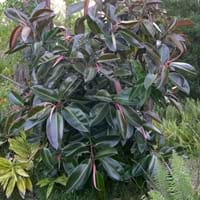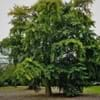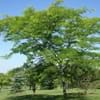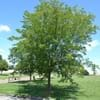Life Span
Perennial
Perennial
Origin
Southern Asia, Southeastern Asia, India, Nepal
North America, United States, Northeastern United States, Mid-Atlantic United States, Southeastern United States, South-Central United States, Texas, Canada
Types
not available
Japanese beech, European beech
Number of Varieties
Not Available
Habitat
agricultural areas, Along Railroads, Coastal Regions, Forests, Roadsides, Scrubs, Suburban areas
low mountains, shaded woods
USDA Hardiness Zone
10-11
4-9
Sunset Zone
H1, H2, 16, 17, 19, 20, 21, 22, 23, 24
1a, 1b, 2a, 2b, 3a, 3b, 4, 5, 6
Habit
Upright/Erect
Oval or Rounded
Flower Color
Not Available
Yellow green, Tan
Flower Color Modifier
Bicolor
Bicolor
Fruit Color
Yellow, Yellow green
Sandy Brown
Leaf Color in Spring
Red, Dark Green, Crimson
Green
Leaf Color in Summer
Red, Dark Green, Crimson
Green, Dark Green
Leaf Color in Fall
Red, Dark Green, Crimson
Gold, Tan, Sandy Brown
Leaf Color in Winter
Red, Dark Green, Crimson
Not Available
Leaf Shape
Elliptic to oblong
Lanceolate
Plant Season
Spring, Summer, Fall, Winter
Spring, Summer, Fall, Winter
Sunlight
Full Sun, Partial Sun, Partial shade
Full Sun
Type of Soil
Loam, Sand
Loam, Well drained
The pH of Soil
Acidic, Neutral, Alkaline
Acidic, Neutral
Soil Drainage
Well drained
Average
Bloom Time
Not Available
Spring
Tolerances
Not Available
Dry soil, Full Sun, Salt and Soil Compaction
Where to Plant?
Ground
Ground
How to Plant?
Seedlings, Vegetative Reproduction
Seedlings, Stem Planting
Plant Maintenance
Medium
Medium
Watering Requirements
Keep ground moist, Requires a lot of watering
Needs very little water, occasional watering once established
In Summer
Lots of watering
Lots of watering
In Spring
Moderate
Moderate
In Winter
Average Water
Average Water
Soil pH
Acidic, Neutral, Alkaline
Acidic, Neutral
Soil Type
Loam, Sand
Clay, Loam, Sand
Soil Drainage Capacity
Well drained
Average
Sun Exposure
Full Sun, Partial Sun, Partial shade
Full Sun
Pruning
Prune for shortening long shoots
Cut upper 1/3 section when young to enhancegrowth, Prune to control growth, Remove damaged leaves, Remove dead branches, Remove dead leaves
Fertilizers
don't fertilize in winter
Compost, Fertilize the soil before planting
Pests and Diseases
Mealybugs, Red blotch, Scale, Spider mites, Yellow Leaves
Aphids, Beech bark disease, fungus, Mildew, Scale
Plant Tolerance
Not Available
Drought, Full Sun, Salt and Soil Compaction
Flowers
Insignificant
Insignificant
Flower Petal Number
Not Available
Not Available
Foliage Texture
Bold
Medium
Foliage Sheen
Glossy
Glossy
Attracts
Not Available
Bees, Birds, Hummingbirds, songbirds
Allergy
Asthma, breathing problems
Itchiness, Pulmonary oedema, Sinuses
Aesthetic Uses
Showy Purposes
Showy Purposes
Beauty Benefits
Not Available
Speed hair growth, Stops hair loss
Environmental Uses
Air purification, soil erosion prevension on hill slopes
Air purification, Shadow Tree, Wild areas
Medicinal Uses
Not Available
Antioxidants, Antiseptic, Digestion problems, Headache, Kidney problems, Pain killer
Part of Plant Used
Latex
Leaves, Sap, Wood
Other Uses
Making rubber, Making tyres
Decorative veneers, flooring, paneling, Grown for shade, Used as firewood, Used as Ornamental plant, Used for its medicinal properties, Wood is used for making furniture
Used As Indoor Plant
Yes
No
Used As Outdoor Plant
Yes
Yes
Garden Design
Container, Feature Plant, Houseplant, Shade Trees, Tropical
Feature Plant, Shade Trees
Botanical Name
FICUS elastica
FAGUS sylvatica
Common Name
Rubber Plant
European Beech
In Hindi
रबड़ का पौधा
यूरोपीय बीच
In German
Ficus elastica
Rotbuche
In French
Ficus elastica
Hêtre commun
In Spanish
ficus
Fagus sylvatica
In Greek
ελαστικός φίκος
Ευρωπαϊκή οξιάς
In Portuguese
fábrica de borracha
Faia-europeia
In Polish
gumy roślin
Buk zwyczajny
In Latin
Flexilis herba
Europae fagi
Phylum
Tracheophyta
Magnoliophyta
Class
Magnoliopsida
Magnoliopsida
Clade
Angiosperms, Eudicots, Rosids
Angiosperms, Eudicots, Rosids
Tribe
Ficeae
Not Available
Subfamily
Not Available
Not Available
Number of Species
Not Available
Season and Care of Ficus Elastica and European Beech
Season and care of Ficus Elastica and European Beech is important to know. While considering everything about Ficus Elastica and European Beech Care, growing season is an essential factor. Ficus Elastica season is Spring, Summer, Fall and Winter and European Beech season is Spring, Summer, Fall and Winter. The type of soil for Ficus Elastica is Loam, Sand and for European Beech is Loam, Well drained while the PH of soil for Ficus Elastica is Acidic, Neutral, Alkaline and for European Beech is Acidic, Neutral.
Ficus Elastica and European Beech Physical Information
Ficus Elastica and European Beech physical information is very important for comparison. Ficus Elastica height is 180.00 cm and width 90.00 cm whereas European Beech height is 800.00 cm and width 500.00 cm. The color specification of Ficus Elastica and European Beech are as follows:
Ficus Elastica flower color: Not Available
Ficus Elastica leaf color: Red, Dark Green and Crimson
European Beech flower color: Yellow green and Tan
- European Beech leaf color: Green
Care of Ficus Elastica and European Beech
Care of Ficus Elastica and European Beech include pruning, fertilizers, watering etc. Ficus Elastica pruning is done Prune for shortening long shoots and European Beech pruning is done Cut upper 1/3 section when young to enhancegrowth, Prune to control growth, Remove damaged leaves, Remove dead branches and Remove dead leaves. In summer Ficus Elastica needs Lots of watering and in winter, it needs Average Water. Whereas, in summer European Beech needs Lots of watering and in winter, it needs Average Water.





